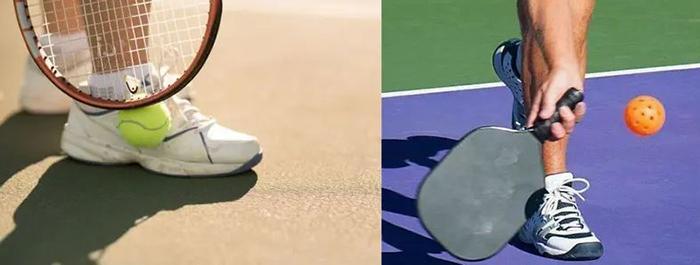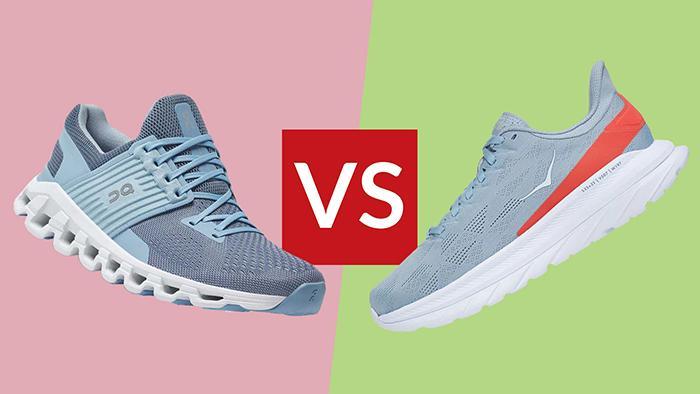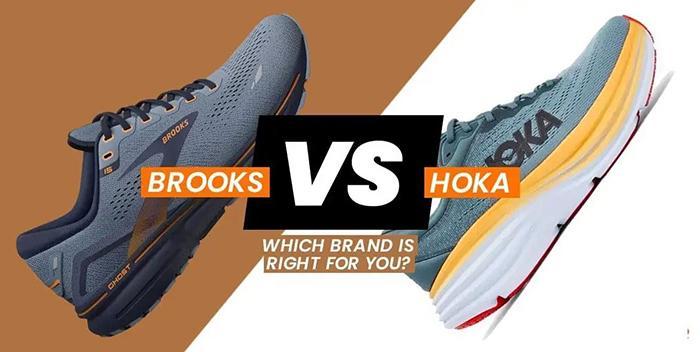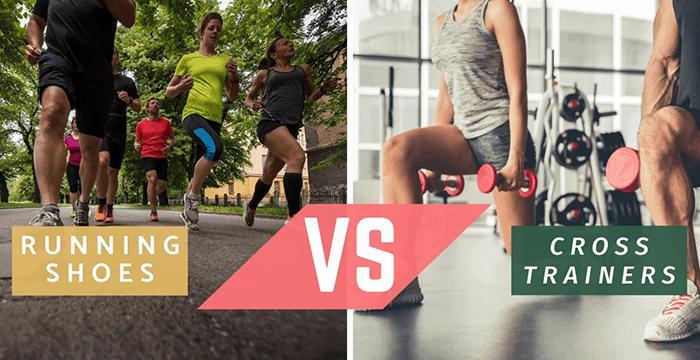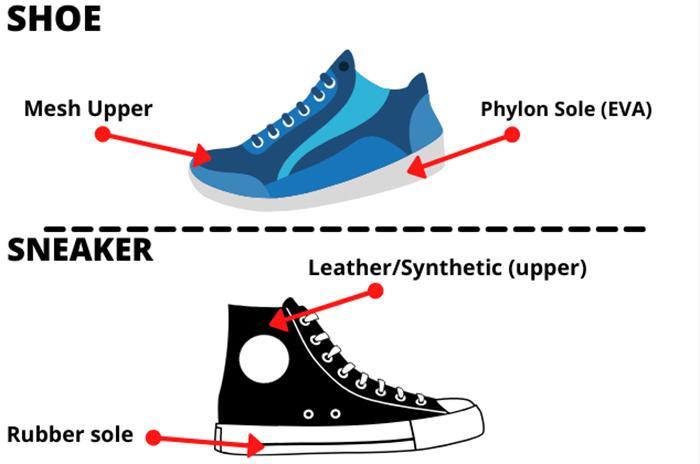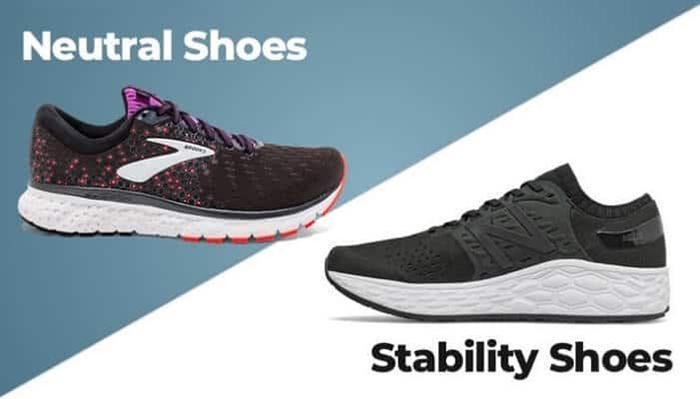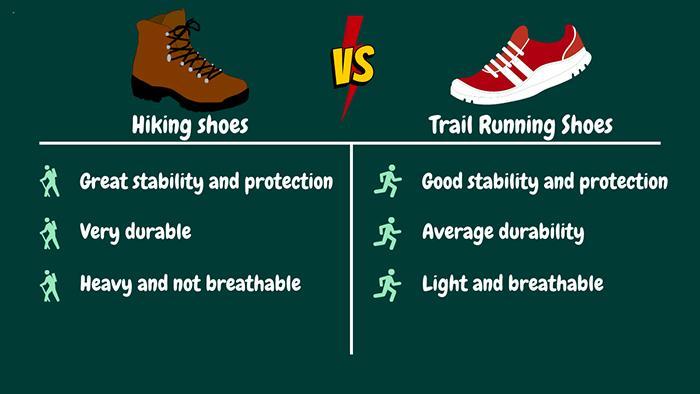Deciding what footwear to don for your daily activities can be surprisingly complex. Did you know that the type of shoe you wear could potentially impact your foot health and jogging style?
This intriguing blog post will guide you through the debate between barefoot shoes versus regular shoes, outlining their respective pros and cons.
You Are Watching: Barefoot Shoes Vs Regular Shoes Updated 02/2025
Ready to step into a world where fashion meets functionality? Let’s stride ahead!
Key Differences Between Barefoot Shoes and Regular Shoes
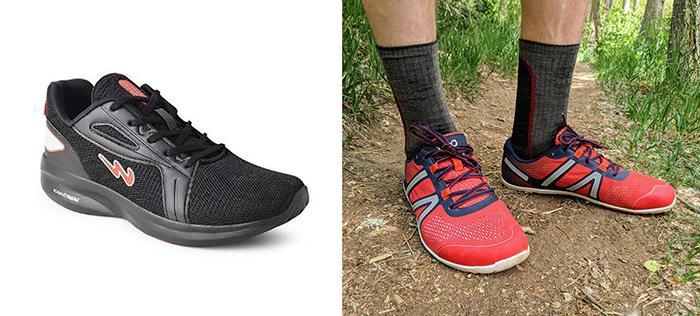
Weight and Flexibility
Diving into the realm of barefoot shoes, you’ll find that they are notably light and flexible. This is by design as these factors mimic natural barefoot movement allowing your foot to move freely without restriction.
In stark contrast, regular shoes often weigh more due to their structured design and additional features for comfort or support such as a padded tongue, a toe cap, or an ankle collar. These elements increase weight but limit flexibility.
Barefoot shoe enthusiasts argue that this lack of suppleness can inhibit your foot’s natural biomechanics and may even contribute to certain injuries such as collapsed arches.
The lightweight nature of barefoot shoes encourages forefoot spreading which can result in improved balance and strength over time – highlighting another plus for going minimalistic in footwear choices!
Heel-to-Toe Drop
The heel-to-toe drop is a crucial factor to consider when choosing between barefoot shoes and regular shoes. This term refers to the difference in height between the shoe’s heel and toe areas.
Regular shoes typically have a higher heel-to-toe drop, which encourages a heel strike while walking or running.
On the other hand, barefoot shoes have a minimal or zero-drop design, allowing for a more natural foot movement and encouraging a mid-foot or forefoot strike.
A lower or zero-drop design in barefoot shoes promotes better alignment of the feet, ankles, knees, and hips during movement.
It helps distribute impact forces more evenly throughout your entire foot rather than concentrating them on your heels.
This can reduce the risk of injuries such as shin splints and knee pain by promoting proper biomechanics.
Furthermore, a lower heel-to-toe drop also allows for greater proprioception – meaning you’ll have increased sensory feedback from the ground beneath you.
By feeling more connected to the terrain, you can make subtle adjustments to your stride length and cadence accordingly.
Durability and Protection
Barefoot shoes and regular shoes differ significantly when it comes to durability and protection.
Regular shoes are typically made with thicker, more robust materials that provide ample protection against rough terrain, sharp objects, and unpredictable weather conditions.
They are designed to withstand frequent use and offer a longer lifespan compared to barefoot shoes.
On the other hand, barefoot shoes prioritize flexibility over durability. Their minimalist design allows for natural foot movement but sacrifices some protective features found in regular shoes.
While they may not be as durable or able to withstand harsh elements as well as regular shoes, barefoot shoes can still offer adequate protection for everyday walking and light physical activities.
In short, if you need footwear that offers enhanced durability and protection for rugged terrains or intense physical activities, regular shoes would be the better choice.
However, if you prioritize natural foot movement and strengthening benefits while engaging in low impact activities or daily wear, then barefoot shoes might be the ideal option for you.
Comfort and Natural Movement
Barefoot shoes are designed to provide a high level of comfort and allow for natural movement of the feet. Unlike regular shoes, which can be restrictive and stiff, barefoot shoes offer a lightweight and flexible design that mimics the feeling of being barefoot.
This allows your feet to move freely and naturally, which can improve overall comfort during activities like walking or running.
Additionally, barefoot shoes promote better alignment and biomechanics by encouraging a more natural gait pattern.
Research has also shown that wearing barefoot shoes can strengthen foot muscles and improve balance, leading to greater overall foot health.
So if you’re looking for maximum comfort and freedom of movement, barefoot shoes may be just what you need.
Benefits of Barefoot Shoes
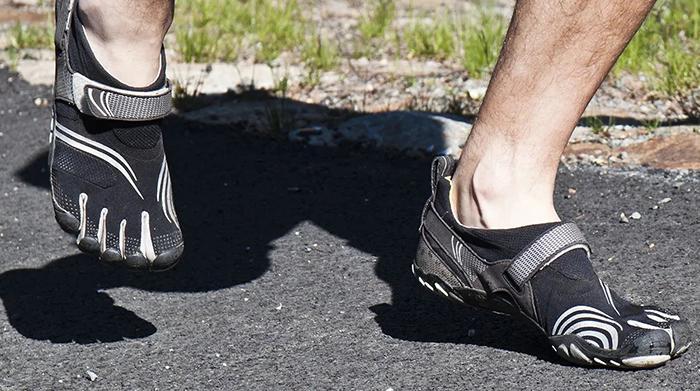
Strengthening Foot Muscles
Barefoot shoes are renowned for their ability to strengthen foot muscles, making them a great choice for shoe enthusiasts looking to improve their overall foot health.
By allowing the feet to move and flex naturally, barefoot shoes engage the small muscles in our feet that are often neglected when wearing regular shoes.
This engagement helps build strength and stability, leading to better balance and reduced risk of injuries.
Read More : How To Use A Shoe Horn Updated 02/2025
Studies have shown that barefoot use can even promote stronger ankle muscles, providing enhanced control and stability during various activities.
So if you’re looking to give your feet a workout while enjoying the benefits of natural movement, consider adding a pair of barefoot shoes to your collection.
With regular shoes, on the other hand, foot muscles may become weak over time due to excessive support from cushioning materials and rigid soles.
While support can be beneficial in certain situations or for specific foot conditions, it’s important not to rely solely on supportive footwear all the time.
By incorporating barefoot shoe usage into your routine, you’ll give those underutilized foot muscles a chance to strengthen and function optimally.
Plus, strong foot muscles contribute not only to healthier ankles but also help prevent knee and hip injuries by promoting proper biomechanics during movement.
Improving Posture and Balance
Wearing barefoot shoes can have a significant impact on improving your posture and balance. When you go shoeless, your feet are allowed to move naturally, which helps activate the muscles in your feet and legs that support proper alignment.
This can lead to better overall posture and reduced strain on your back and joints. Additionally, by promoting a more natural gait pattern, barefoot shoes help improve proprioception – the ability to sense the position and movement of our body parts – which further enhances stability and balance.
So if you’re looking to strengthen your core, align your spine, and feel more grounded with each step, give barefoot shoes a try.
Enhancing Natural Gait and Biomechanics
Barefoot shoes offer a unique advantage when it comes to enhancing your natural gait and biomechanics.
Unlike regular shoes, which often restrict the movement of your feet, barefoot shoes allow for greater freedom of movement.
This means that as you walk or run, your feet can move more naturally and efficiently.
By wearing barefoot shoes, you can activate the muscles in your feet and lower legs that may not get much exercise when wearing regular shoes.
This increased muscle engagement helps to strengthen important muscles that support proper foot alignment and improve stability.
When you wear traditional shoes with thick soles and raised heels, it can alter your gait and create imbalances in how you walk or run.
Barefoot shoes encourage a more natural stride by allowing your foot to make full contact with the ground from heel to toe.
This promotes better posture, balance, and overall biomechanics while reducing stress on joints.
Promoting Sensory Input and Proprioception
Barefoot shoes offer a unique advantage when it comes to promoting sensory input and proprioception.
These shoes allow your feet to feel the ground more naturally, providing direct feedback on different surfaces.
This increased sensory input helps improve your body’s awareness of its position in space, leading to better balance and coordination while walking or running.
Studies have shown that barefoot shoes can enhance the perception of foot placement and contribute to improved lower limb biomechanics.
By stimulating the nerve endings in your feet, these shoes encourage a stronger connection between mind and body, enhancing overall performance and reducing the risk of injuries.
In contrast, regular shoes often limit this sensory experience by providing thick cushioning or arch support that dampens feedback from the ground.
While cushioned footwear may be beneficial for certain activities that involve high impact forces such as running on concrete or engaging in intense sports, it is important to strike a balance between protection and natural movement.
By opting for barefoot shoes during low-impact activities like walking or everyday use, you can reap the benefits of enhanced proprioception while also strengthening your foot muscles over time.
Benefits of Regular Shoes

Cushioning and Shock Absorption
Regular shoes are known for their cushioning and shock absorption properties, providing a comfortable and protective experience for your feet.
The cushioned soles of traditional shoes help to absorb impact when walking or running, reducing the stress on your joints.
This can be especially beneficial for individuals with sensitive or injury-prone feet. However, it’s important to note that excessive cushioning may also limit the natural movement of your feet and potentially weaken the supporting muscles over time.
On the other hand, barefoot shoes have minimal cushioning in their soles, allowing for a more direct connection between your feet and the ground.
While this lack of cushioning may feel different at first, it can actually enhance foot strength and proprioception (your body’s awareness of its position).
Protection from Hazards and Weather
Regular shoes provide better protection from various hazards and weather conditions compared to barefoot shoes.
The cushioning and thicker soles of regular shoes help absorb shock and protect your feet from sharp objects or uneven surfaces.
Read More : Do New Balance Shoes Run Small Updated 02/2025
Whether you’re walking on a rocky trail or navigating through the city streets, regular shoes offer a layer of defense against potential injuries.
Additionally, they provide better insulation against cold temperatures, keeping your feet warm and comfortable during chilly weather.
When it comes to protecting your feet from hazards and unpredictable weather conditions, regular shoes are the go-to choice for providing optimal safety and comfort.
Barefoot shoes, on the other hand, prioritize natural foot movement over heavy insulation or extra padding.
While they may not offer as much protection from hazards like sharp objects or extreme weather conditions, barefoot shoes can still benefit you in terms of developing stronger foot muscles and enhancing proprioception.
By allowing your feet to flex naturally, barefoot shoes promote improved balance and stability over time. They also encourage proper biomechanics during movement, reducing the risk of certain knee or hip injuries caused by collapsed arches in traditional footwear.
Support for Specific Foot Conditions
For individuals with specific foot conditions, regular shoes often provide the necessary support and stability. Conditions like plantar fasciitis, bunions, or flat feet require extra cushioning and arch support to alleviate pain and discomfort.
Regular shoes are designed with these considerations in mind, offering various features such as orthotic inserts or specialized sole constructions tailored to address specific foot issues.
These supportive features can help distribute weight evenly across the feet, reducing strain on problematic areas and promoting proper alignment.
For those dealing with foot conditions that require additional support, regular shoes are a practical choice to ensure comfort and minimize potential exacerbation of symptoms.
Style and Fashion Options
When it comes to style and fashion, regular shoes have the upper hand compared to barefoot shoes. Regular shoes offer a wide range of styles, designs, and colors to choose from, allowing you to express your personal style and match your outfits.
Whether you’re looking for sneakers, boots, or heels, regular shoes provide endless options for every occasion.
On the other hand, barefoot shoes tend to have a more minimalist aesthetic with fewer frills and embellishments.
However, they make up for it with their focus on functionality and natural foot movement. So if you’re someone who values both style and comfort in your footwear choices, regular shoes might be more appealing while still keeping in mind the potential benefits that barefoot shoes can offer in terms of foot health.
Choosing the Right Footwear for Your Needs
Assessing Your Activity and Environment
Consider the following factors:
- Foot comfort: Barefoot shoes provide a more natural and comfortable fit, allowing your toes to spread and wiggle freely.
- Natural running gait: If you are a runner, consider whether you prefer a more traditional heel-to-toe stride or a forefoot strike with shorter and more compact strides.
- Ankle stability: If you have weak or unstable ankles, regular shoes may offer more support and stability during activities that require lateral movements.
- Knee and hip injuries: If you have had previous knee or hip injuries, barefoot shoes can help strengthen the muscles in your feet and lower legs, potentially reducing strain on these areas.
- Forefoot spreading: Barefoot shoes encourage the natural spreading of your forefoot, which can improve balance and stability during activities like hiking or trail running.
- Cadence: Pay attention to your step length and cadence while walking or running. Barefoot shoes can promote a higher cadence with shorter strides, which can reduce impact forces on joints.
Consulting with a Podiatrist or Foot Specialist
To ensure you choose the right footwear for your specific needs, it’s always a good idea to consult with a podiatrist or foot specialist.
These professionals have the expertise and knowledge to evaluate your feet, assess any underlying issues, and provide personalized recommendations.
By discussing your activity levels, environment, and foot health history with them, they can guide you towards the most suitable type of shoes – whether it be barefoot or regular.
Their expert advice will help you make an informed decision that prioritizes comfort, support, and overall foot health.
So don’t hesitate to seek professional guidance before making your shoe selection.
Gradually Transitioning to Barefoot Shoes
Transitioning to barefoot shoes should be done gradually to allow your feet and muscles to adapt. Here are some tips for a smooth transition:
- Start with short periods: Begin by wearing barefoot shoes for just a few minutes each day, gradually increasing the time as your feet get used to the new sensation.
- Mix it up: Alternate between barefoot shoes and your regular shoes during the transition period. This will give your feet a break and prevent any discomfort or strain.
- Listen to your body: Pay attention to any discomfort or pain during the transition process. If you experience excessive soreness or injuries, take a step back and give your feet more time to adjust.
- Focus on strengthening exercises: Incorporate foot-strengthening exercises into your routine, such as toe curls, calf raises, and balance exercises. These will help build strength in the muscles that may have been underutilized in traditional shoes.
- Gradually increase activity level: Once you feel comfortable in barefoot shoes for everyday activities, gradually introduce them into more active pursuits like walking longer distances or light jogging.
- Be mindful of terrain: When transitioning, choose flat surfaces initially and gradually work up to more challenging terrains like grass or gravel. This will allow your feet and muscles to adapt at their own pace.
Considering a Combination Approach
For those who can’t quite decide between barefoot shoes and regular shoes, considering a combination approach might be the best option.
By alternating between both styles of footwear, you can reap the benefits of both worlds.
Regular shoes offer cushioning and support, which is particularly important for activities that involve high impact or longer distances.
On the other hand, barefoot shoes promote natural foot movement and strengthen muscles through their minimalist design.
This combination allows you to protect your feet when needed while also allowing them to move more naturally and build strength.
It’s all about finding the right balance that suits your specific needs and preferences.
Conclusion
In conclusion, when it comes to choosing between barefoot shoes and regular shoes, it ultimately depends on your personal preferences and needs.
Barefoot shoes offer a range of benefits such as strengthening foot muscles, improving posture and balance, enhancing natural gait, and promoting sensory input.
On the other hand, regular shoes provide cushioning, protection from hazards and weather conditions, support for specific foot conditions, and style options.
It’s important to consider factors like your activity level and environment when selecting footwear.
Consulting with a podiatrist or foot specialist can also help you make an informed decision.
Whether you decide to go fully barefoot or opt for a combination approach, prioritizing foot health and biomechanics is key.
Sources: https://www.centuryinshoes.com
Category: Shoes

